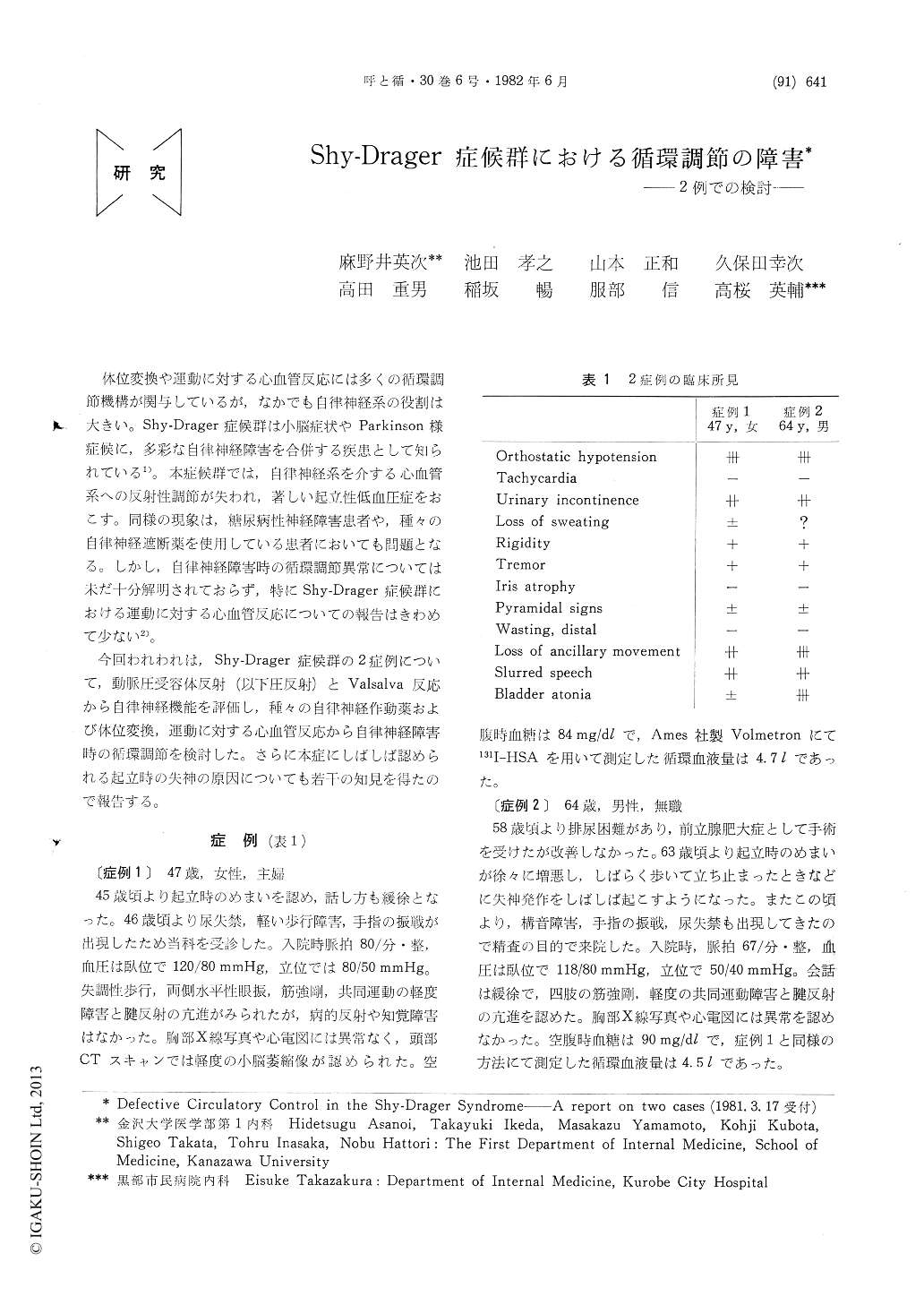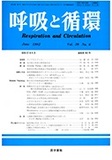Japanese
English
- 有料閲覧
- Abstract 文献概要
- 1ページ目 Look Inside
体位変換や運動に対する心血管反応には多くの循環調節機構が関写しているが,なかでも自律神経系の役割は大きい。Shy-Drager症候群は小脳症状やParkinson様症候に,多彩な自律神経障害を合併する疾患として知られている1)。本症候群では,自律神経系を介する心血管系への反射性調節が失われ,著しい起立性低血圧症をおこす。同様の現象は,糖尿病性神経障害患者や,種々の自律神経遮断薬を使用している患者においても問題となる。しかし,自律神経障害時の循環調節異常については未だ十分解明されておらず,特にShy-Drager症候群における運動に対する心血管反応についての報告はきわめて少ない2)。
今回われわれは,Shy-Drager症候群の2症例について,動脈圧受容体反射(以下圧反射)とValsalva反応から自律神経機能を評価し,種々の自律神経作動薬および体位変換,運動に対する心血管反応から自律神経障害時の循環調節を検討した。さらに本症にしばしば認められる起立時の失神の原因についても若干の知見を得たので報告する。
Cardiovascular responses to autonomic blockade, postural change and exercise were examined in a 47 year old female and a 64 year old malewith the Shy-Drager syndrome.
In both patients, the baroreflex control of heart rate was almost lost. Cardiac accelerations during static and dynamic exercises, including the Valsalva maneuver were remarkably diminished. On the other hand, the intrinsic heart rate after autonomic blockade was within normal range.

Copyright © 1982, Igaku-Shoin Ltd. All rights reserved.


